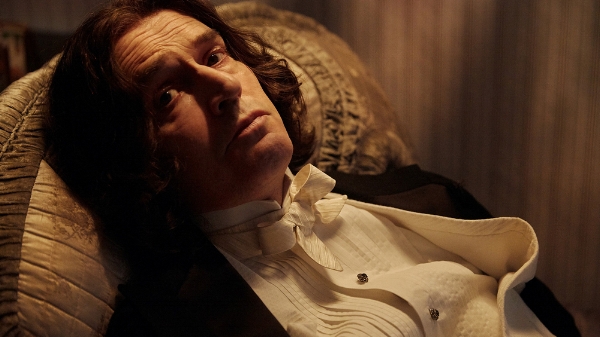In a film that initially poses as standard home-invasion horror fare, Jordan Peele's “Us” broadens the social critique that powered his Oscar-winning “Get Out,” to both greater and lesser effect.
Representative middle-class nuclear family the Wilsons have headed out to their summer lake home. As they unpack, we are introduced to bespectacled goofball father Gabe (Winston Duke), tightly wound mother Adelaide (Lupita Nyong’o), taciturn teen daughter Zora (Shahadi Wright Joseph) and her grade-school-age brother Jason (Evan Alex), who is partial to wearing a werewolf Halloween mask.
After a trip to the beach turns into a game of “keeping up with the Jonseses” with their bougier white counterparts, the Tylers—father Josh (Tim Heidecker), mother Kitty (Elisabeth Moss) and twin daughters Becca and Lindsey (Cali and Noelle Sheldon)—the Wilsons return home for the night, only to be confronted by another family that seeks to usurp their position, this one dressed in blood-red jumpsuits and bearing over-sized gold scissors.
The new interlopers are true doppelgangers, but reflected in a perverse funhouse mirror. Played by the same actors, Gabe's double is a rampaging, inarticulate hulk; Zora's duplicate wields a grin as sharp and wicked as the blades in her hand; and the alternate Jason scurries about like a feral creature, his entire head obscured by a nylon hood. Enhanced by cinematographer Mike Gioulakis's (“It Follows”) creeping camera movements and Michael Abels's “Omen”-inspired chanting, the results are terrifying.
It turns out that the invaders are led, as are the Wilsons, by a mother-figure, in this case, Addie's duplicate, Red, the only member capable of speech. Asked who they are, Red responds in the labored rasp of the drowning, “We're Americans.” The reply is both inscrutable and shocking.
At this point Peele's film both expands its ambition and begins to stumble. If “Get Out” addressed the issue of racial prejudice within the very narrow confines of an upper-class enclave, “Us” seeks to expand that injustice to the entire political and social underclass.
As the Wilson's flee their home, they realize that they are not the sole target of the self-described “Tethered.” Their neighbors, the Tylers, are also under assault despite the advantages of swankier digs and a top-of-the-line voice-activated in-house assistant. Television news reports reveal that the activity is not even confined to the area.
With allusions to 1986's populist benefit gesture Hands Across America, Peele portrays a nation-wide uprising of the underclass. With a nod to Michael Haneke's “Funny Games,” Zora defends herself with one of the Tyler's golf clubs, and images of the red-clad Tethered taking to the streets are more than a little reminiscent of “Conquest of the Planet of the Apes.”
The problem comes in the delivery. To explain “the Tethered,” Peele's screenplay requires an extended monologue from Red, chockablock with flashbacks and backstory. Multiple twists and turns are involved, and even hough they are portrayed on-screen the audience is really getting it all second-hand, which undercuts the impact.
“Get Out” had a bit of the same exposition problem, but Peele managed to work it into the action as a television broadcast. “Us” finds no such solution and ultimately leaves the viewer with more intriguing ideas and images than the movie has time to successfully develop.
One lingering practical question remains: If you organized a nationwide revolution, would you arm your troops only with big scissors? And where would you get all those scissors?














